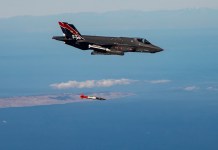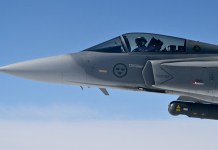Israel’s ‘Iron Dome’ missile defense system has been in the limelight in the recent clashes with Palestine. The Jewish nation has another lethal weapon in its arsenal, ‘Iron Beam’, that has been designed for future warfare.
The Iron Dome was hailed as “god’s grace” for intercepting hundreds of rockets fired by Hamas recently. The weapon is very effective in C-RAM (counter-rocket, artillery, and mortar) roles, with a success rate of over 90%. No other system in the world has ever been tested so intensely and showed such a success rate.
However, Israel continues to invest in the research and development of newer weapons to counter future challenges. Among them is a laser weapon that can shoot down incoming missiles as a close-range air defense system.
Iron Beam
Iron Beam, as it is called, comes with two major developments for the Israeli Defense Forces. Primarily, the system is designed to destroy short-range rockets, artillery, and mortar bombs, having a range of up to 7 km (4.3 mi), too close for the Iron Dome system to intercept projectiles effectively.
There is also a possibility that Iron Beam would serve as the last tier of a layered air defense system to neutralize the threats that managed to penetrate the Iron Dome and other successive layers.
Although the Iron Beam can also be used as a stand-alone system, this could be installed on vital installations and city centers to secure much-populated neighborhoods.
The Iron Beam can target small unmanned aerial vehicles that have been used by Israel’s enemies to target strategic installations via kamikaze attacks.
This system uses a fiber laser to destroy an airborne target within 4–5 seconds of firing. Whether acting as a stand-alone system or with external cueing as part of an air-defense system, a threat is detected by a surveillance system and tracked by vehicle platforms in order to engage.
Another advantage of Iron Beam is the lower interception cost. Currently, Iron Dome’s Tamir interceptor missile, one of the most combat-proven and advanced SAMs, comes with a hefty price tag of between $20,000 and $100,000 per missile (there is no official confirmation on this).
Some experts claim that if two Tamirs are fired against each incoming target, that would double the cost of every interception.
Additionally, the main benefits of using a directed energy weapon or laser weapon over conventional missile interceptors are lower costs per shot, an unlimited number of firings, lower operational costs, and less manpower.
Besides, there is no risk of interceptor debris falling on the area.
The Iron Beam is stated to be the fifth element in Israel’s future layered air defense system, which includes Arrow 2, Arrow 3, David’s Sling, Barak-8, and Iron Dome.




